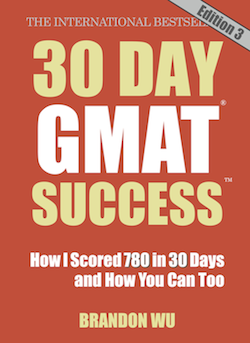The Official Guide 13th Edition How To Quantitative: Page 166, #105
The Official Guide recommends solving this problem by applying the variables s and t to the number of students and the number of teachers, respectively. However, setting up algebraic equations isn’t always easy. You may want to try backsolving on this question instead.
Start with choice (C). If the present number of teachers is 10, you can set up the proportion 30⁄1 = x⁄10 to calculate a total of 300 students. The next step in the problem is to add 50 students and 5 teachers. This gives you 350 students and 15 teachers total. Set up a new equality using the new ratio specified in the question: 25⁄1 = 350⁄15. Since 375 does not equal 350, this answer is incorrect and since 15 can be divided into 350 fewer than 25 times, you need to increase the number of teachers.
Remember that with backsolving, if you can determine without a doubt whether you need a larger or a smaller number than the one you first chose, it does not matter which of the remaining two choices you try. If the correct answer isn’t one, it has to be the other. So choose the number that is easier to work with. In this case, because you will add 5 to the number of teachers, 15 is a better starting number than 12, because 12 + 5 = 17, which isn’t a very easy number to work with.
Set up your proportions again using 15 as the present number of teachers. 30⁄1 = x⁄15 gives you 450 students. Add 50 students and 5 teachers and set up the new proportion. 25⁄1 = 500⁄20 is a true statement, so the correct answer is choice (E).
Want more information? Check out the Backsolving section of my 30 Day GMAT Success book!
